Editor of this issue: Thomas Remeikis
Copyright © 1977 LITUANUS Foundation, Inc.

|
LITUANUS
LITHUANIAN QUARTERLY JOURNAL OF ARTS AND SCIENCES
Volume 23, No.1 - Spring 1977
Editor of this issue: Thomas Remeikis ISSN 0024-5089
Copyright © 1977 LITUANUS Foundation, Inc. |

|
VLADISLOVAS ŽILIUS:
A MODERN PAINTER FROM A SOVIET
SCHOOL
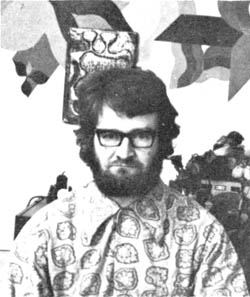
Vladislovas Žilius {b. 1939} is a product of Soviet art school, which functions within the rather narrow limits of socialist realism — a doctrine in art which considers art as instrumental and socio-political in purpose. Žilius completed art studies in 1964 at the Institute of Art in Vilnius, specializing in graphic art. Subsequently he served as art editor in various publishing houses and illustrated many books. Recently, he has been working mostly on paintings.
Vladislovas Žilius was well acquainted with the latest modern art tendencies in the West and himself began to reflect them in his own works, leading him beyond the limits of socialist realism, A confrontation with Soviet art commissars was inevitable and finally came in 1975. In a letter to the First Secretary of the Central Committee of the Communist Party of Lithuania, dated January 23, 1976, Žilius wrote:
"My entire creative activity was accompanied by an oppressive moral and* material discrimination which the governmental authorities directed against me. They isolated me from the public and forbade me to present my paintings in official exhibitions. The critical evaluation of my creative work is left to individuals who occupy high posts in the bureaucratic hierarchy but who often lack even an elementary competence to judge art. Such profanation of cultural life in general has driven me to ultimate doubts about the purposefulness of my further existence in Lithuania, an existence that is totally devoid of any perspective.
As a man and as an artist, I find the formula of the so-called socialist realism alien to me and difficult to understand in terms of logic. In its essence, "socialist realism" is the vulgarization of an individual's creative talent and the transformation of creative activity into a mere trade. The "socialist realism" list of proscriptions begins and ends with the unwritten but ready-made dogmatic and narrow list of allowed and forbidden themes, phenomena, and objects communicated in the creative process. This formula of "socialist realism" is not content with limiting the choice of themes — it insists with extreme severity an the leveling of the form of visual expression.
The voice of protest is rising from my innermost being. It is a protest against the compulsory, machine-like programming of the creative consciousness in order to reduce it to a primitive pattern. The result of this programming is the destruction of the individual's creative individuality, of his subjective dimension, although that very subjectivity and individualism constitute each artist's genuine and fundamental core of worth.
I simply cannot subject my world feeling to a drill sergeant's rhythm, and I refuse to express that world feeling in a plastic visual form within the confines of a military barracks.
The formula of "socialist realism" and the officials who represent it in Lithuania (appointed by people in the higher ranks of the bureaucratic hierarchy to defend that pseudo-theory and to work for its realization) have vulgarized the very essence of artistic creation, sometimes trying to drag it down to a primitive popular level. In doing this, they are fostering pseudo-culture and are seeking to provincialize even more our already profoundly provincial cultural life (owing to the absence of a global exchange of information and the leveling of creative independence).
I believe that, as an individual living in our era, I have the universal human right to freedom of thought and to a free perception of the world around me. What I desire is to communicate in my paintings or in some other forms of plastic art my own inner vision and to create new cultural values unrestricted by the zealous managers of socialist realism and without having to copy imposed worn-out patterns.
Finally he requested permission to leave his homeland, which was granted at the beginning of 1976. Presently V. Žilius resides in the United States and already has exhibited his paintings and prints, done in Lithuania as well as in the United States.
* * * * *
The work of V. Žilius, whether paintings or prints, is characterized by special precision and well developed technique. In his graphic works he uses effectively architectural, natural, and religious motifs and has developed a unique style. His book illustrations are very much like paintings. For example, the illustrations for children's books are in fact mostly abstract miniature paintings, which as illustrations were passed by the Soviet censors, but would have been considered outside of the socialist realism tradition as paintings.
The paintings of Žilius, which are mostly abstract with a symbolic aspect, can be grouped in three categories, which differentially affect the viewer. The first group consists of paintings of exclusively geometric forms, characterized by gentle and subtle hues of colors, transmitting a tranquil, cool, precisely planned balance of form and color with light optical vibrations.
A second group of paintings expresses chaotic enclosed labyrinths of forms and colors, without exits, in short, a suffocating feeling. As the eye views the paintings, the observer feels like "Alice in Wonderland": there are no exits, wherever one turns — a new barrier, a new puzzle. Bright reds, oranges, and yellows intensify the paintings.
A third category of works expresses geometric forms in perspective, with openings, dragon flies in flight, open doors to space, a vanishing man in the distance, outstretched hands. . . All this arouses a sense of freedom and disengagement.
The work of Žilius is extremely personal and as such it often may be incomprehensible. However, since he uses extensively universal symbols, even though they are utilized in unique situations, his work is quite explicable
ZITA SODEIKA
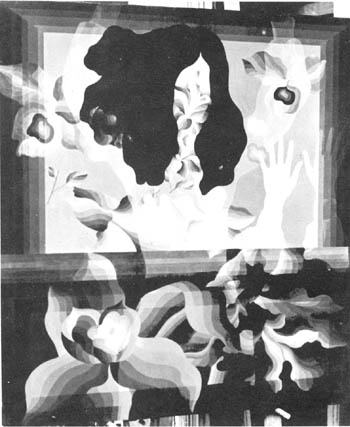
"Portrait," oil Vilnius, 1975
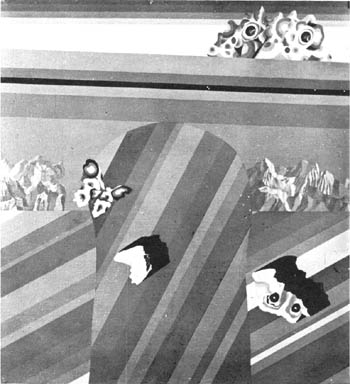
"Butterflies," oil, Vilnius, 1974
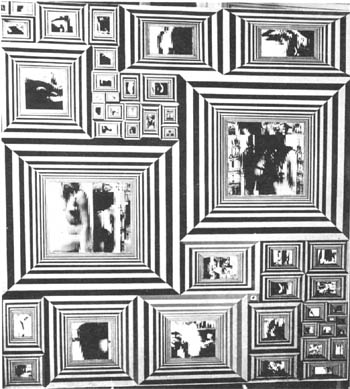
Optical composition "Window," mixed media, Vilnius, 1967
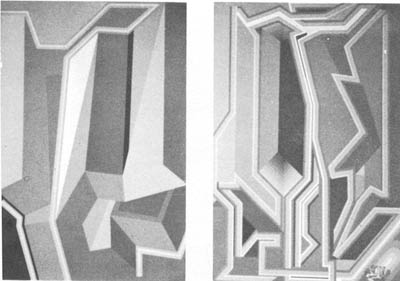
Diptych "No, 16" and "No. 17," oil, Vilnius, 1975
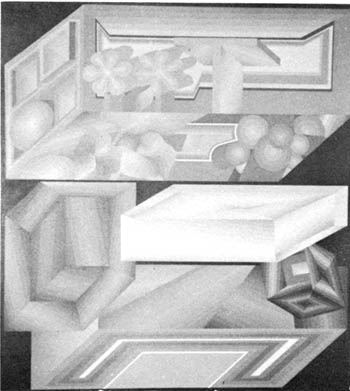
"No. 21," oil, Vilnius, 1975
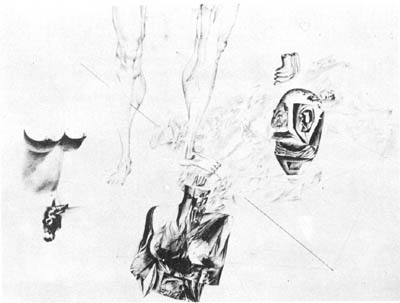
Drawing from the series "The Theater," Vilnius, 1967
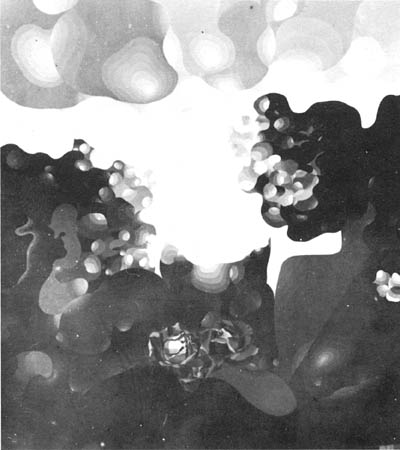
"Dark Paintings," Vilnius, 1975
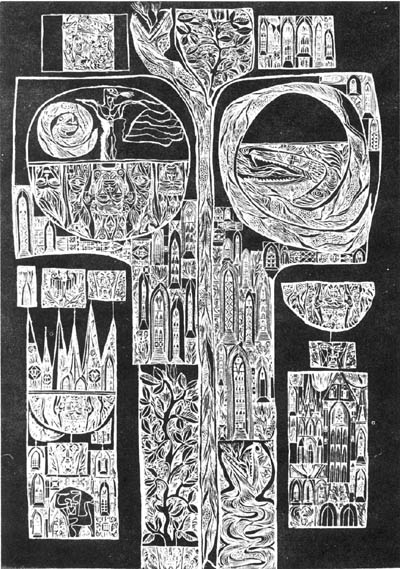
Print series "Legends of Vilnius," etching, Vilnius, 1967